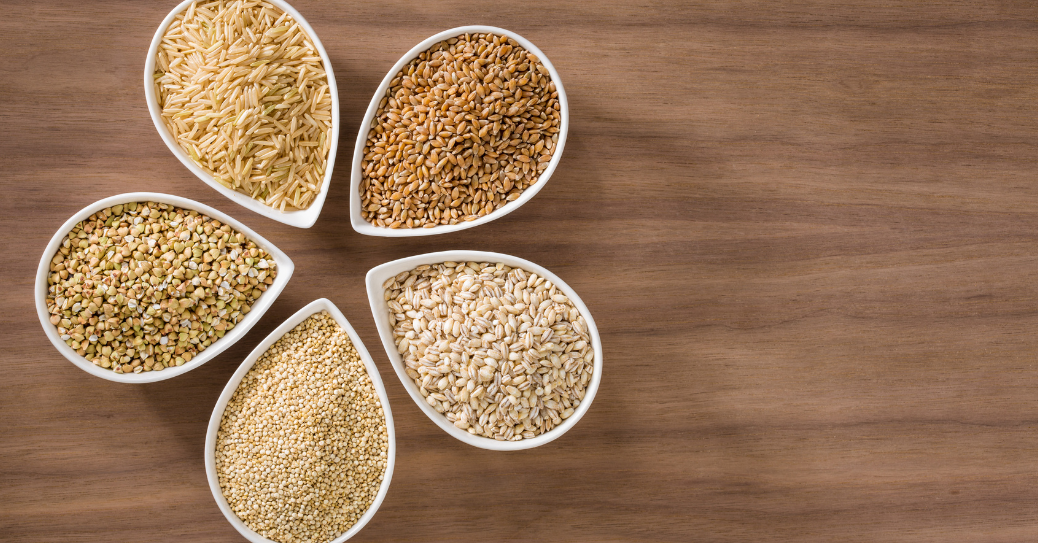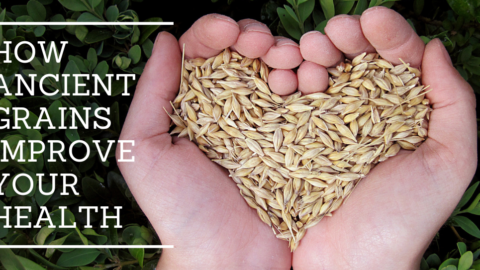According to the New York Times, ancient grains such as einkorn, farro, and teff are prized for their nutritional benefits and historical significance. Einkorn, one of the oldest forms of wheat, has a unique gluten structure that some find easier to digest, potentially benefiting those with gluten sensitivities. Farro and teff, similarly ancient grains, are rich in protein, fiber, and essential nutrients.
Where are Ancient Grains cultivated?
Ancient grains are cultivated in numerous countries worldwide, including Italy, China, Germany, Switzerland, Mexico, and many more.
Below is a concise chart illustrating the countries where various common ancient grains are cultivated:
| Ancient Grains | Countries of Production |
| Spelt | USA, Spain, Belgium, Switzerland, Germany |
| Buckwheat | France, Poland, Ukraine, Russia |
| Chia | Mexico, Argentina, Uganda |
| Einkorn | Italy, Turkey |
| Sorghum | India, United States |
| Millet | China, India |
| Farro | Syria, Turkey |
| Quinoa | Ecuador, Peru, Bolivia |
| Barley | Australia, Russia |
What are the health benefits of Ancient Grains?
Ancient grains boast exceptional benefits, offering complete proteins, essential amino acids, and ample fiber for digestive health and satiety. Varieties like teff and millet deliver vital minerals, promoting bone and cardiovascular well-being, while their low glycaemic indices support stable blood sugar levels and sustained energy.
| Health Benefits | Spelt | Buckwheat | Chia | Einkorn | Sorghum | Millet | Farro | Quinoa | Barley |
| High in Proteins | ✔ | ✔ | – | ✔ | ✔ | ✔ | ✔ | – | ✔ |
| Digestive Health | ✔ | ✔ | ✔ | ✔ | ✔ | ✔ | ✔ | ✔ | ✔ |
| Cholesterol Control | ✔ | ✔ | – | ✔ | ✔ | ✔ | ✔ | – | ✔ |
| High Fibre | ✔ | ✔ | ✔ | ✔ | ✔ | ✔ | ✔ | ✔ | ✔ |
| Antioxidants | ✔ | ✔ | ✔ | ✔ | ✔ | ✔ | ✔ | ✔ | ✔ |
| Bone Health | ✔ | ✔ | – | ✔ | – | ✔ | ✔ | ✔ | ✔ |
Which Ancient Grains are Gluten-Free?
The chart below delineates which grains are devoid of gluten and which are replete with gluten.
| Ancient Grains | Gluten-Free |
| Spelt | No |
| Buckwheat | Yes |
| Chia | Yes |
| Einkorn | No |
| Sorghum | Yes |
| Millet | Yes |
| Farro | No |
| Quinoa | Yes |
| Barley | No |
Here is a list of 9 ancient grains from the New York Times that are highly beneficial for a nutritious cereal.
Spelt
Spelt, an ancient cereal grain, offers a robust nutritional profile. It is rich in protein and dietary fiber, contributing to a satiating and balanced diet. Its carbohydrate content provides a steady energy source, while its moderate fat content supports overall health. The grain’s fiber content is noteworthy, promoting digestive wellness and potentially aiding long-term health benefits.
Spelt is highly versatile and can be used in various culinary dishes. It enhances flavor and nutritional value when added to various foods, including pasta, salads, pancakes, muffins, burgers, pizza, and cookies. Its adaptability makes Spelt an excellent choice for enriching diverse meal plans with taste and nutrition.
Here’s a simple table for the nutritional content of Spelt (per 100 grams):
| Nutrients | Amount |
| Protein | 14.6 grams |
| Fat | 2.4 grams |
| Carbohydrates | 70.4 grams |
| Calories | 338 kcal |
Buckwheat
Buckwheat is a top choice for weight management and overall health. It benefits those with heart conditions and diabetes by supporting cardiovascular health and regulating blood sugar levels.
Buckwheat is versatile in the kitchen. It can be used in noodles, salads, pies, pastries, and stuffings. Rich in fiber, calcium, iron, and magnesium, it supports digestive health, strong bones, and muscle function. Notably, buckwheat is entirely gluten-free, making it ideal for individuals with celiac disease or gluten sensitivity.
Here’s a simple table for the nutritional content of Buckwheat (per 100 grams):
| Nutrients | Amount |
| Protein | 13.3 grams |
| Fat | 3.4 grams |
| Carbohydrates | 71.5 grams |
| Calories | 343 kcal |
Chia
Chia is another ancient grain rich in proteins, minerals, calcium, iron, and magnesium. These tiny seeds are known for their impressive nutritional profile and various health benefits.
One of the standout features of chia seeds is their high fiber content, which makes them excellent for promoting digestive health and alleviating constipation. The soluble fiber in chia seeds absorbs water, forming a gel-like substance that helps to keep the digestive system running smoothly and prevents constipation.
Here’s a simple table for the nutritional content of Chia (per 100 grams):
| Nutrients | Amount |
| Protein | 16.5 grams |
| Fat | 30.7 grams |
| Carbohydrates | 42.1 grams |
| Calories | 486 kcal |
Einkorn
Einkorn is exceptionally beneficial for health. Incorporating this ancient grain into one’s diet can relieve stomach acid or gastrointestinal issues, significantly enhancing digestive function.
Here’s a simple table for the nutritional content of Einkorn (per 100 grams):
| Nutrients | Amount |
| Protein | 14.0 grams |
| Fat | 2.5 grams |
| Carbohydrates | 70.0 grams |
| Calories | 338 kcal |
Einkorn is versatile and can be used to prepare pancakes, breads, cookies, and pastries.
Let’s discuss some culinary uses of ancient grains.
| Ancient Grains | Flavour | Common Dishes |
| Spelt | Slightly Sweet | Pasta, Risotto, Salads, Bread |
| Buckwheat | Slightly Bitter | Porridge, Soba Noodles |
| Chia | Mild, Nutty | Smoothies, Puddings |
| Einkorn | Rich, Nutty | Bread, Pasta |
| Sorghum | Mild, Earthy | Porridge, Flatbreads |
| Millet | Sweet, Mild | Beer Brewing, Porridge |
| Farro | Chewy | Soups, Salads |
| Quinoa | Slightly Nutty | Salads, Porridge |
| Barley | Chewy, Nutty | Soups, Salads, Risottos |
Sorghum
Sorghum, an ancient grain revered for its adaptability, finds itself at home in many culinary traditions. Its subtle, earthy flavor enhances savory and sweet dishes, making it an indispensable ingredient in global gastronomy.
Here’s a simple table for the nutritional content of Sorghum (per 100 grams):
| Nutrients | Amount |
| Protein | 11.3 grams |
| Fat | 3.3 grams |
| Carbohydrates | 72.0 grams |
| Calories | 329 kcal |
Millet
Renowned for its mild, slightly sweet flavor, millet seamlessly integrates into savory and sweet dishes, ranging from creamy porridges to delicate flatbreads.
Nutritionally, millet is a powerhouse, offering substantial amounts of protein, fiber, and essential minerals such as magnesium and phosphorus, making it an excellent choice for those seeking a wholesome, gluten-free alternative. Its resilience to harsh growing conditions further underscores its importance as a sustainable crop, capable of thriving with minimal water and enriching diverse culinary traditions with its versatile applications.
Here’s a simple table for the nutritional content of Millet (per 100 grams):
| Nutrients | Amount |
| Protein | 11.0 grams |
| Fat | 4.2 grams |
| Carbohydrates | 73.0 grams |
| Calories | 378 kcal |
Farro
Farro, a cherished grain from ancient Rome, is celebrated for its hearty, nutty flavor and satisfyingly chewy texture. Integral to Mediterranean diets, farro is often found enriching soups, salads, and risottos, imparting a wholesome quality to these dishes. Packed with fiber, protein, and essential minerals such as magnesium and zinc, farro is an excellent addition for those aiming to boost their nutritional intake with wholesome grains.
Here’s a simple table for the nutritional content of Farro (per 100 grams):
| Nutrients | Amount |
| Protein | 14.0 grams |
| Fat | 2.4 grams |
| Carbohydrates | 70.0 grams |
| Calories | 340 kcal |
Quinoa
Quinoa, esteemed for its impressive nutritional profile, hails from the Andean region of South America. Known for its delicate, nutty taste, quinoa is a versatile ingredient that can be seamlessly incorporated into a myriad of dishes, from vibrant salads to substantial bowls and even breakfast porridges.
Notably, quinoa boasts a complete protein profile, containing all nine essential amino acids, making it a superb plant-based protein source. Additionally, it is rich in fiber, iron, magnesium, and manganese, further solidifying its reputation as a nutritional powerhouse. Revered by the ancient Incas as the “mother grain,” quinoa is vital to the Andean culture and enjoys global popularity for its health benefits and culinary flexibility.
Here’s a simple table for the nutritional content of Quinoa (per 100 grams):
| Nutrients | Amount |
| Protein | 14.1 grams |
| Fat | 6.1 grams |
| Carbohydrates | 64.2 grams |
| Calories | 368 kcal |
Barley
Barley, an ancient grain with a rich history, is prized for its versatility and subtly nutty, chewy texture. Frequently featured in soups, stews, salads, and notably in beer brewing, barley enhances various dishes with its robust flavor.
Nutritionally, barley is a standout due to its high dietary fiber content, particularly beta-glucan, which has been shown to lower cholesterol levels. It also offers a wealth of vitamins and minerals, including selenium, magnesium, and B vitamins. As one of the earliest cultivated grains, barley has been instrumental in the development of agriculture and remains valued today for its nutritional benefits and ability to add depth and character to various culinary creations.
Here’s a simple table for the nutritional content of Barley (per 100 grams):
| Nutrients | Amount |
| Protein | 12.5 grams |
| Fat | 2.3 grams |
| Carbohydrates | 73.5 grams |
| Calories | 352 kcal |
Conclusion
Incorporating ancient grains into a healthy cereal, as highlighted by the New York Times, offers significant nutritional benefits and culinary diversity that modern grains often lack. Grains like quinoa, farro, and barley bring robust flavors, varied textures, and essential nutrients such as high protein, fiber, and vital minerals to the breakfast table.
These grains are generally less processed than contemporary options, preserving their natural benefits and ensuring a more wholesome cereal experience.
The New York Times emphasizes that embracing these ancient grains honors their historical importance and enriches modern diets, providing both traditional comfort and contemporary nourishment as part of healthier eating practices.












 Get survival, travelling and auto tips, follow new technology trends, entertainment stories and world events with PeekTimes.
Get survival, travelling and auto tips, follow new technology trends, entertainment stories and world events with PeekTimes.